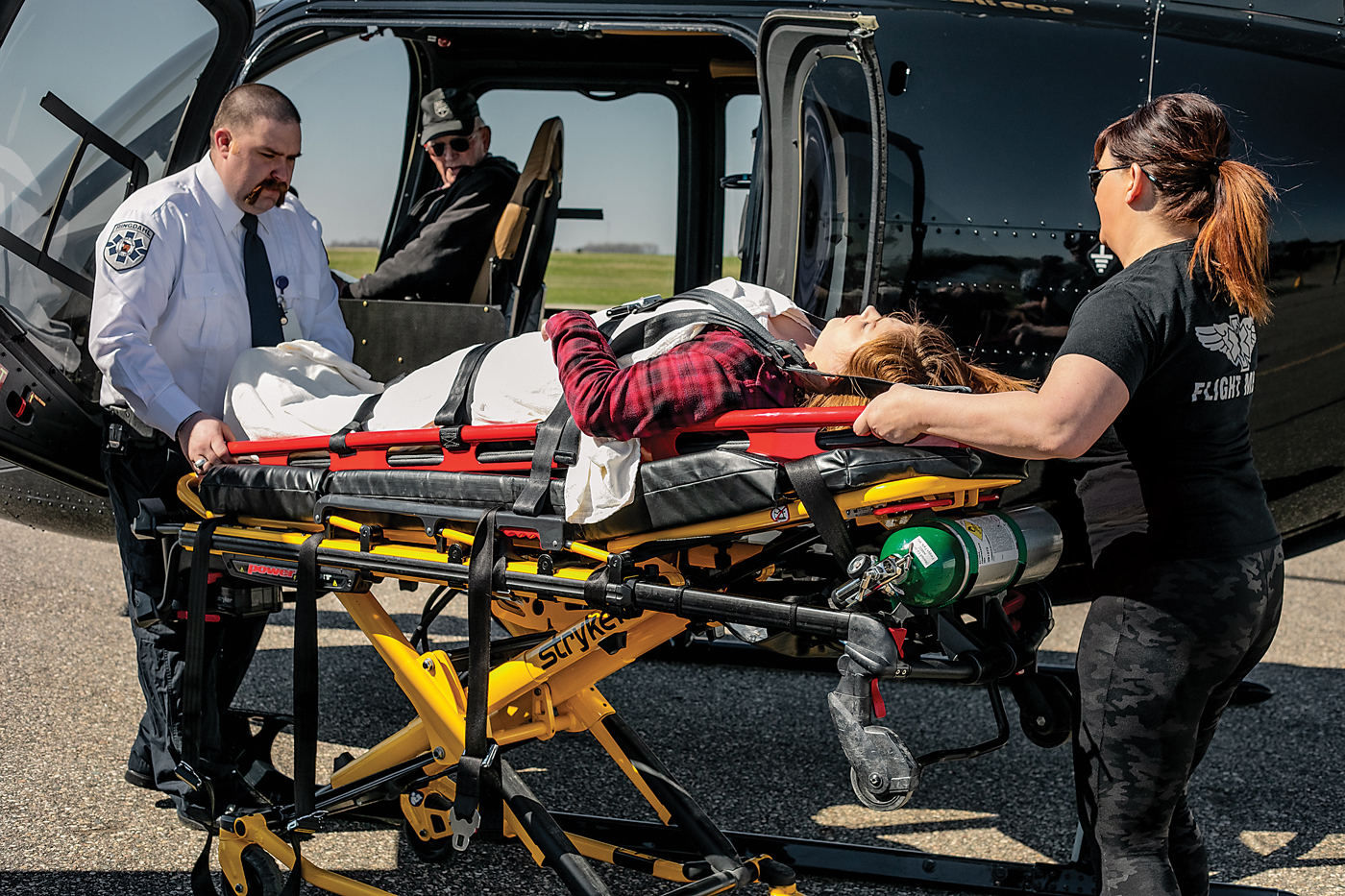In the middle of another bone-chilling Minnesota winter nearly two years ago, when January temperatures dipped as low as two degrees Fahrenheit (-17 C), the staff at Med-Pac received an invitation to the Bell helicopter facility in Grand Prairie, Texas.
Bell was looking for a lightweight EMS interior for its new 505 Jet Ranger X single-engine helicopter and wanted to run the idea past Med-Pac’s staff, who had previously designed and manufactured a lightweight interior for the Bell 429.
 “They gave us a wish list of what they wanted, not knowing if it could happen or not,” said Elizabeth Hoadley, director of sales and marketing for Med-Pac and a former critical care nurse and flight medic. “At the end of the list, one of the partners in the meeting said, essentially, ‘We want an EMS Light.’ ”
“They gave us a wish list of what they wanted, not knowing if it could happen or not,” said Elizabeth Hoadley, director of sales and marketing for Med-Pac and a former critical care nurse and flight medic. “At the end of the list, one of the partners in the meeting said, essentially, ‘We want an EMS Light.’ ”
Hoadley wrote the term down on a notepad, and then–accompanied by Med-Pac founder and president Ralph Braaten–she returned to Med-Pac’s facility in Lake Park, Minnesota, to brainstorm concepts.
“Between the two of us, we came up with the idea of using carbon fiber to shed [weight] off of the medical interior,” said Hoadley. “And, during the engineering process, we were able to give them every single item on their wish list, in addition to coming in far lighter than they ever thought possible.”
Med-Pac also decided to incorporate a term from that original meeting into the name of the design kit. In the summer of 2018, it received U.S. Federal Aviation Administration approval for what is now officially called the EMS Lite Interior for the Bell 505. In addition to that supplemental type certificate (STC), MedPac also holds an approval from China.
“The difference between this interior and other HEMS [helicopter emergency medical services] interiors is that this is a very quick-change item–[and it is] incredibly lightweight,” said Hoadley. “It’s rugged; it’s durable. It has everything you need for HEMS operations [and] advanced life support.”
Med-Pac’s Bell 505 EMS Lite Interior weighs just 84 pounds (38 kilograms) and can be installed in 10 to 15 minutes. It doesn’t require changes to the airframe or fuselage and is seen as ideal for multi-mission operations.
The Med-Pac 505 EMS kit comes with a mounting plate, a base, a fluid barrier to protect the floor of the helicopter, a stretcher and a fully equipped trauma backpack with an oxygen tank that emergency workers can carry with them into the field.
 Another feature of the design is a mount that can support the trauma backpack, oxygen bottle and other equipment. There is also an isolation barrier with an embedded map case that separates the patient and pilot.
Another feature of the design is a mount that can support the trauma backpack, oxygen bottle and other equipment. There is also an isolation barrier with an embedded map case that separates the patient and pilot.
“It’s very user-friendly, and a good option for everyone [flying] this light-duty helicopter,” said Hoadley. “The response has been so great on this particular style of system that we’re looking at other platforms now.”
Since Ralph Braaten started the company in 2000, Med-Pac has developed an outstanding reputation for medical manufacturing, particularly for air medical unit installations. Throughout its 20-year history, Med-Pac’s goal has been to provide medical staff with the equipment they need to save lives.
Its wealth of expertise has produced STCs for about 290 aircraft. Though the majority of those STCs are for fixed-wing planes, Med-Pac has developed interiors for the Bell 212, 412 and 206L-3 helicopters, as well as Bell’s 505 and 429 platforms.
“It’s just been a natural evolution that we would go into HEMS, and it’s very exciting for us,” said Hoadley. “We currently have six helicopters, and we’ve done that in a very short amount of time, just because we have faced a market that needed another quick-change, lightweight alternative to what was out there.”
Many medical helicopter interiors weigh 400 pounds. They require operators to dedicate their aircraft solely to medevac missions and require the helicopters to undergo expensive conversions or modifications, said Hoadley.
 “We give them a lightweight alternative to use that helicopter as a multi-mission aircraft. And, it doesn’t have to be cut up. It doesn’t have to have a mod. . . . For the 429 and the other models of helicopters we have, it’s a simple electrical harness, and then a quick-change interior.
“We give them a lightweight alternative to use that helicopter as a multi-mission aircraft. And, it doesn’t have to be cut up. It doesn’t have to have a mod. . . . For the 429 and the other models of helicopters we have, it’s a simple electrical harness, and then a quick-change interior.
“The Bell 505 doesn’t even have an electrical component–it’s truly a quick-change interior.”
At press time, Med-Pac was also considering creating lightweight, quick-change HEMS interiors for MD and Airbus helicopters.
As Med-Pac celebrates its 20th anniversary this year, its focus is on developing lightweight, quick-change solutions that can be tailored to each customer.
“We’ll work with them,” said Hoadley. “We’ll make their dreams come true. We keep true to our motto, Customer Focused and Quality Driven.
“You know, their wish list–we can do that for them–which is something that sets us apart from everyone else. . . . We’re lighter, faster and more cost-effective than our competitors.”









